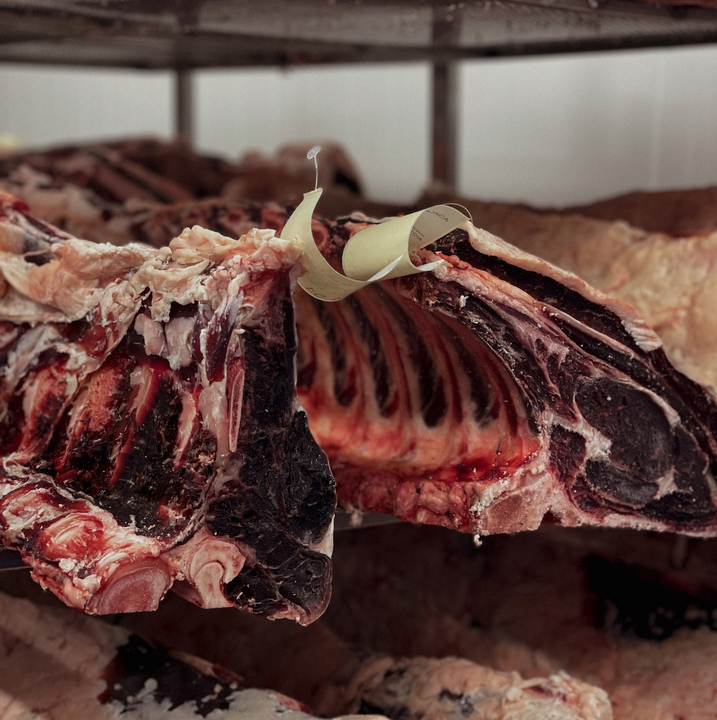The Art of Steak Aging: Dry-Aged and Wet-Aged
Aged steak is a true delicacy for meat connoisseurs. It is the result of a meticulous process that brings out the full flavors and textures of the meat

There are two main methods of aging steaks: dry aging and wet aging. Each has its own advantages and applications, and understanding them can significantly enhance the quality of the dishes served. Choosing the right method can turn an ordinary meal into a culinary feast, the taste of which lingers in memory for a long time.
What is the process of aging meat for steaks?
Aging or maturing meat is the time needed for raw meat to gain the appropriate tenderness and become ready for consumption. Thanks to this process, the meat becomes more tender, acquiring a unique flavor. Only the nobler parts of beef intended for steaks, such as sirloin, ribeye, or tenderloin, undergo aging. This process is an essential element in preparing meat so that steaks appreciated by connoisseurs worldwide can achieve their full aroma and delicacy. Aging is divided into wet and dry aging, and the choice of method affects the final character of the meat.
Dry-aged steaks – a feast for the senses
Dry-aging beef allows for amazing results, provided it is carried out in an optimal manner. In many places, dry-aging beef is done in refrigerators, but this is not the most desirable form. Renowned meat establishments age beef in specially designed coolers where aseptic, fully controlled conditions prevail. As a result, the meat obtained is not only perfectly prepared but also completely safe.
Wet aging – a modern preservation method
Wet aging is a relatively new technique compared to dry aging. Steaks are vacuum-packed and stored at low temperatures, allowing for a controlled breakdown of tissues without losing moisture. This process is much shorter than dry aging and usually lasts from a few days to a few weeks.
Although wet-aged steaks do not lose weight as dry-aged ones do, they retain more of their original moisture. As a result, they are juicy and have a less intense but equally pleasant flavor. This is an ideal solution for those who prefer a more delicate steak.
How to choose the aging method?
The choice of aging method should depend on personal taste preferences and the desired final effect. Dry-aged steaks offer a more intense flavor and a more tender texture, making them often chosen for special occasions. On the other hand, wet aging is an excellent choice for those who value juiciness and the delicacy of the meat.
When buying steaks, it is worth asking about the aging method to better match the meat to your recipe and expectations. Regardless of the chosen technique, it is important to choose high-quality steaks from trusted suppliers, which will significantly affect the final result on the plate.
Understanding the processes that shape the flavor and texture of steaks not only allows for better preparation but also for more informed purchasing decisions. A mature steak is not only an element of a luxurious meal but also the result of applying precise techniques that, over time, become true culinary art.